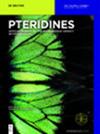亚甲基四氢叶酸脱氢酶2 (MTHFD2)在头颈部鳞状细胞癌(HNSCC)中过表达并与患者预后不良相关
IF 0.9
4区 医学
Q4 BIOCHEMISTRY & MOLECULAR BIOLOGY
引用次数: 0
摘要
摘要目的探讨亚甲基四氢叶酸脱氢酶2(MTHFD2)的表达、生物学功能及其与头颈部鳞状细胞癌(HNSCC)患者预后的关系。方法在癌症基因组图谱和癌基因数据库中分析肿瘤组织和癌旁正常组织中MTHFD2基因mRNA的相对表达水平。在人类蛋白质组数据库中分析HNSCC患者肿瘤组织中MTHFD2蛋白的相对表达。在STRING数据库中构建了MTHFD2和相关基因的蛋白质-蛋白质相互作用(PPI)网络。丰富了MTHFD2的基因本体论和京都基因和基因组百科全书途径以及参与PPI网络的相关蛋白质。肿瘤免疫评估资源数据库用于分析MTHFD2表达与免疫浸润之间的关系。在Kaplan–Meier Plotter数据库中研究了MTHFD2高表达组和低表达组的总生存期(OS)和无进展生存期(PFS)。结果HNSCC中MTHFD2mRNA在肿瘤组织中的相对表达水平显著高于相应的正常组织,差异有统计学意义(p<0.05)。在PPI网络中,21个蛋白质编码基因参与了124个边缘的网络,MTHFD2和PPI网络相关基因主要富集在四氢叶酸代谢过程、一碳代谢过程的生物学过程中。在KEGG途径中,MTHFD2和PPI网络相关基因主要通过叶酸、代谢途径、乙醛酸和二羧酸代谢以及碳代谢富集在一个碳库中。MTHFD2基因的相对表达水平与巨噬细胞(r=0.712,p<0.05)、中性粒细胞(r=0.158,p<0.05)和树突状细胞(r=0.1825,p<0.05)的免疫浸润相关,高表达MTHFD2的HNSCC患者OS较低(危险比=1.53,95%CI:1.16–2.02,p<0.05)。结论MTHFD2在HNSCC中过表达,与患者预后相关。MTHFD2可能是HNSCC靶向治疗的潜在靶点,为相关靶向药物的研究和开发提供了可能的方向。本文章由计算机程序翻译,如有差异,请以英文原文为准。
Methylene tetrahydrofolate dehydrogenase 2 (MTHFD2) is overexpressed in head and neck squamous cell carcinoma (HNSCC) and correlated with patient’s poor prognosis
Abstract Objective To investigate methylene tetrahydrofolate dehydrogenase 2 (MTHFD2) expression, biological function, and correlation with head and neck squamous cell carcinoma (HNSCC) patient’s prognosis. Methods The relative expression levels of MTHFD2 gene mRNA in tumor tissues of HNSCC and adjacent normal tissues were analyzed in the Cancer Genome Atlas and oncomine database. MTHFD2 protein relative expression in tumor tissue of HNSCC patients was analyzed in human proteome database. Protein–protein interaction (PPI) network of MTHFD2 and correlated genes were constructed in STRING database. Gene ontology and Kyoto Encyclopedia of Genes and Genomes pathway of MTHFD2 and relevant proteins involved in the PPI network was enriched. The Tumor Immune Estimation Resource database was used to analyze the relationship between MTHFD2 expression and immune infiltration. Overall survival (OS) and progression-free survival (PFS) for MTHFD2 high and low expression groups were investigated in the Kaplan–Meier Plotter database. Results In HNSCC, MTHFD2 mRNA relative expression level in tumor tissue was significantly higher than the corresponding normal tissue with statistical difference (p < 0.05). In the PPI network, 21 protein coding genes were involved in the network with 124 edges, which indicated that the enrichment was significant (p < 0.05). MTHFD2 and PPI network involved genes were mainly enriched in tetrahydrofolate metabolic process, one-carbon metabolic process biological process. In KEGG pathway, MTHFD2 and PPI network involved genes were mainly enriched in one-carbon pool by folate, metabolic pathways, glyoxylate, and dicarboxylate metabolism, and carbon metabolism. The relative expression level of MTHFD2 gene was correlated with immune infiltration of macrophage (r = 0.712, p < 0.05), neutrophil (r = 0.158, p < 0.05), dendritic cell (r = 0.1825, p < 0.05), and CD4+ T lymph cell (r = 0.1825, p < 0.05). HNSCC patients with high expression MTHFD2 had low OS compared to low expression cases (hazard ratio = 1.53, 95% CI: 1.16–2.02, p < 0.05). Conclusion MTHFD2 is overexpressed in HNSCC and correlated with patient’s prognosis. MTHFD2 maybe a potential target for HNSCC target treatment and provides a possible direction for the research and development of related targeted drugs.
求助全文
通过发布文献求助,成功后即可免费获取论文全文。
去求助
来源期刊

Pteridines
生物-生化与分子生物学
CiteScore
1.20
自引率
25.00%
发文量
6
审稿时长
>12 weeks
期刊介绍:
Pteridines is an open acess international quarterly journal dealing with all aspects of pteridine research. Pteridines are heterocyclic fused ring compounds involved in a wide range of biological functions from the color on butterfly wings to cofactors in enzyme catalysis to essential vitamins. Of the pteridines, 5,6,7,8-tetrahydrobiopterin is the necessary cofactor of several aromatic amino acid monoxygenases, the nitric oxide synthases and glyceryl ether monoxygenase (GEMO). Neopterin plays an essential role in the immune system and is an important biomarker in laboratory medicine for diseases such as HIV, cardiovascular disease, malignant tumors, among others.
Topics:
-Neopterin, dihydroneopterin, monapterin-
Biopterin, tetrahydrobiopterin-
Folates, antifolates, riboflavin-
Phenylalanine, tyrosine, phenylketonuria, serotonin, adrenalin, noradrenalin, L-DOPA, dopamine, related biogenic amines-
Phenylalanine hydroxylase, tyrosine hydroxylase, tryptophan hydroxylase, nitric oxide synthases (iNOS), alkylglycerol monooxygenase (AGMO), dihydropterin reductase, sepiapterin reductase-
Homocysteine, mediators of inflammation, redox systems, iron.
 求助内容:
求助内容: 应助结果提醒方式:
应助结果提醒方式:


